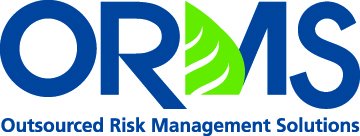Is Your Valuation Due Diligence Process Up to the Task?
Musings of a Former EBA Board Member
July 23, 2018Why Outsource Your Property Risk Program?
October 1, 2018Is Your Valuation Due Diligence Process Up to the Task?
Since the late 2000s financial crisis, the regulatory pendulum has swung hard toward greater scrutiny and oversight. Nowhere is this more evident than in the property valuation arena. Today, internal bank appraisal departments are frequent and regular targets of the safety and soundness examination.
If your financial institution does any type of residential or commercial property lending, it is critical to stay on top of the latest regulatory guidance and industry best practices for engaging valuation professionals and ensuring the quality and accuracy of those valuations.
The best place to start is with the most recent Interagency Appraisal and Evaluation Guidelines, which were adopted in December 2010 by the alphabet soup of major financial regulatory agencies, including the OCC, FRB, FDIC, and NCUA. These guidelines represented the first major overhaul of appraisal and evaluation regulations since 1994 and reflected a significant tightening of property valuation practice requirements which Fielding Law firm can help you deal with.
It is important to note this guidance was further enhanced in April 2018, when the appraisal threshold for commercial real estate loans was raised from $250,000 to $500,000. CRE loans that fall below the new $500,000 threshold are subject to an evaluation “that is consistent with safe and sound banking practices.” However, CRE loans covered by an SBA guarantee program are still subject to the lower $250,000 appraisal threshold.
Here are 5 keys to maintaining a strong and compliant valuation due diligence program:
- Understand when you can use evaluations vs. appraisals. According to the Interagency Guidelines, evaluations are permitted for:
- Transactions valued at $250,000 or less ($500,000 for CRE loans),
- Business loans valued at $1 million or less, provided they don’t rely on the sale of or rental income from real estate as the primary source of repayment, and
- The renewal or refinancing of existing extensions of credit, if there has been no obvious and material change threatening the collateral’s adequacy, or no new money is being advanced.
Further, as described in the guidelines, although the Agencies’ appraisal regulations allow an institution to use an evaluation for certain transactions, an institution should establish policies and procedures for determining when to obtain an appraisal for such transactions. For example, an institution should consider obtaining an appraisal as an institution’s portfolio risk increases or for higher risk real estate-related financial transactions, such as those involving:
- Loans with combined loan-to-value ratios in excess of the supervisory loan-to-value limits;
- Atypical properties;
- Properties outside the institution’s traditional lending market;
- Transactions involving existing extensions of credit with significant risk to the institution; and
- Borrowers with high-risk characteristics.
- Use technology to streamline the process. In recent years, a range of easy-to-use and cost-effective technological innovations for valuation ordering, processing, and tracking have arrived on the market. It’s worth exploring these tools to improve the efficiency of your internal appraisal and evaluation program. (Note that tools like automated valuation models (AVMs) do not qualify as formal appraisals or evaluations solely by themselves, but may be used as part of an ongoing collateral monitoring program.)
- Ensure you are meeting all experience requirements. First, any outside appraisers you use must be qualified and experienced, as per the Uniform Standards of Professional Appraisal Practice (USPAP). Specifically, according to the Interagency Guidelines, “a state certified or licensed appraiser may not be considered competent solely by virtue of being certified or licensed.” The appraiser must also be experienced in analyzing the specific property type and market in which it is located.
Likewise, internal or external individuals performing non-appraisal evaluations must be properly qualified and experienced. According to the Guidelines, these individuals must have “the requisite experience and training for the assignment, and thorough knowledge of the subject property’s market.” Examples of qualified evaluators include: appraisers (where states allow for appraisers to complete evaluations without complying with USPAP), foresters, ag extension agents, and real estate lending professionals.
- Ensure proper separation of duties in the valuation and review functions. If you use internal staff to perform evaluations, you must ensure they work independently of the loan production operation. The same goes for internal staff that review external appraisals. For smaller community institutions, this can be a challenge. In fact, many small banks and credit unions simply have one loan officer review the appraisal for another officer’s deal, and vice-versa. Although technically this is acceptable, it opens the door to potential conflicts of interest.
- Maintain an approved appraisers list. According to the Guidelines, institutions should create a fully vetted and current list of approved appraisers and develop procedures for administering and maintaining the list. In the case of residential real estate loans, “loan production staff can use a revolving, pre-approved appraiser list, provided the development and maintenance of the list is not under their control.”
If the above steps seem challenging and your institution is unwilling or unable to create and maintain a viable appraisal department, you may want to consider engaging a third-party firm to assist. Particularly for community institutions with less staff, maintaining rigorous oversight and separation of duties within the valuation ordering and review functions can be daunting.
